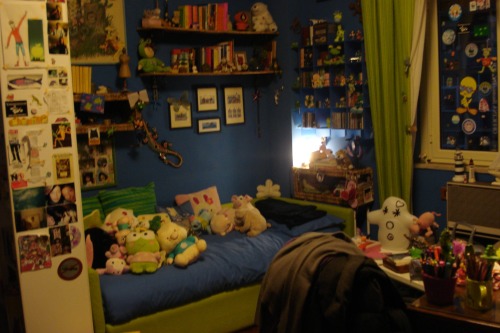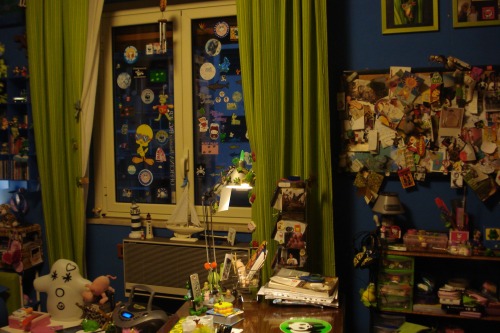Jellypickle - Little Shenanigans









More Posts from Jellypickle and Others
Hi! I was just wondering, what's the best way to make/write out a plot?
Guide: How to Outline a Plot
The best way to outline a plot isn’t the same for everyone, and sometimes it’s even different from story to story. There are lots of different methods, and most writers use a combination of them, so you just have to try different things to see what works best for you. Here are some of the most common methods:
1. Just Write
Some writers are what’s known as “pansters” meaning that once they have a story idea in mind, they prefer to “fly by the seat of their pants” and start writing without any planning in place. The key to making this method work is to remember that you’re only writing the first draft. Nothing you’re doing is set in stone, so don’t feel the story has to be perfect in one shot. Follow your gut and write the story to the best of your ability. Worry about tightening and polishing in subsequent drafts.
2. Synopsis
Some writers prefer to start by writing beginning to end summary of the story, describing all the important details and events in the order that they unfold. Summaries can be a great way to flesh out an idea for a plot, and they can also serve as a nice guideline if you want to “just write” your story but need a bit more structure first.
3. Old-Fashioned Outline
Do they still teach academic outlining in school? I don’t even know… when I was a kid, we learned how to do outlines with Roman numerals for the main points, capital letters for the minor points, and numbers for sub-points. If you’re good at outlining, this can be a great way to outline your plot.Edit: to clarify, it looks like this:I. Main Idea A. Minor Idea 1. Sub-Idea i. sub-idea ii. sub-idea 2. Sub-Idea i. sub-idea ii. sub-idea B. Minor Idea 1. Sub- Idea i. sub-idea ii. sub-idea… … and so on. And no, I don’t mean the “seven step story structure outline.” This is an academic outline. It can be used for anything, including outlining a story. :)
4. Timeline
Creating a timeline for your story can be a great way to map it out. All you need is a beginning event, climax event, and end event. From there you can start filling in the events that follow and precede those events. Even if you don’t know the exact date for when a scene takes place, you can still mark it down in the right general place.
5. Scene List
If you have a pretty good idea of the scenes that need to take place, or at least a good number of them, you can start by writing out a scene list. It’s nice to do them in a table if you can so you can organize important details, like chapter, scene number, date and location, who’s in it, and then a short summary. Though, how you organize it is up to you. If you prefer, you can just write the scene number and then a brief summary.
6. Story Structure Map
Some writers like to map out their story according to whatever story structure they want to follow. They’ll pull up a graphic or chart of the structure, transcribe it onto paper or into a document, and then note each relevant event for each structure “mile marker.”
7. Subway/Tube Map
This is a new one I recently heard about. I haven’t had a chance to try it yet, but I think it’s fascinating. And there are even subway map creators you can use if you don’t want to draw it out. Ultimately, the goal is to map out the events of your story in the style of a subway/tube map. This method makes it easy to illustrate subplots and see how they relate to the rest of your story.
8. The Mind Map
Mind maps can be a fantastic way to get the most important parts of your story out on paper, and to start figuring out where other parts fit in and how they relate to everything else.
9. Index Cards
Some writers have luck writing out key scenes, moments, bits of dialogue (or anything else they have in mind) on individual index cards, which can then be laid out in order on a table, allowing for cards to be easily moved around, added, subtracted, etc. until a more complete story starts to emerge. Some writers even invest in giant cork boards for this purpose. Others use a dry erase board and draw out the “cards” instead. A lot of story writing software, such as Scrivener, even includes digital bulletin boards and index cards that you can use to visualize your story.
10. Method/Theory/Template
There are numerous methods/theories/templates dedicated to building/fleshing out plots. Some to look into:
- The Snowflake Method- Dramatica Theory- Save the Cat! for Novels- The Hero’s Journey
If one of the above doesn’t work for you, you’re sure to find even more ideas online. Try doing a search for “how to outline a plot” or “outlining a novel” to see what comes up. You might even try searching for your favorite author’s name plus “outlining” to see if they’ve done any posts sharing their own methods. You may also want to look into books, software, and apps/web sites that offer ways to help you plot your story.
Good luck!


2008



Inktober Day 10 - Fortune I like to think Aziraphale goes to visit Madame Tracy every once in a while for tea as a thank you for the lift during the apocalypse. Crowley begrudgingly tags along (because of course he does)

my first actual contribution. hello mouthwashers

the real reason he did it
You Liead
Credit to @stephreynaart as the artist! :3
Bill and Ford both voiced by me

serial experiments viktor
her: you better not be yuri fight club when i get home
my stupid ass:

they need to make a pocket dimension you can hide in where time doesn't pass and everything is soft
-
 bjarkanart liked this · 1 week ago
bjarkanart liked this · 1 week ago -
 shadowfreddyfunkoplushie liked this · 1 week ago
shadowfreddyfunkoplushie liked this · 1 week ago -
 bebopfirefly reblogged this · 1 week ago
bebopfirefly reblogged this · 1 week ago -
 cherrystarz222 liked this · 1 week ago
cherrystarz222 liked this · 1 week ago -
 langdondarkhouse liked this · 1 week ago
langdondarkhouse liked this · 1 week ago -
 violyndelights liked this · 1 week ago
violyndelights liked this · 1 week ago -
 lefemmerouge liked this · 1 week ago
lefemmerouge liked this · 1 week ago -
 fuzzykazeki87 liked this · 1 week ago
fuzzykazeki87 liked this · 1 week ago -
 ema404-yea liked this · 1 week ago
ema404-yea liked this · 1 week ago -
 corpuscris liked this · 2 weeks ago
corpuscris liked this · 2 weeks ago -
 child-of-oerba reblogged this · 2 weeks ago
child-of-oerba reblogged this · 2 weeks ago -
 caitseyepatch liked this · 2 weeks ago
caitseyepatch liked this · 2 weeks ago -
 sweettreetrash reblogged this · 2 weeks ago
sweettreetrash reblogged this · 2 weeks ago -
 sweettreetrash liked this · 2 weeks ago
sweettreetrash liked this · 2 weeks ago -
 mx-moon reblogged this · 2 weeks ago
mx-moon reblogged this · 2 weeks ago -
 unofficial981 liked this · 2 weeks ago
unofficial981 liked this · 2 weeks ago -
 dutifullydelicatemiracle liked this · 2 weeks ago
dutifullydelicatemiracle liked this · 2 weeks ago -
 vislittlecupcake liked this · 2 weeks ago
vislittlecupcake liked this · 2 weeks ago -
 biingpot reblogged this · 2 weeks ago
biingpot reblogged this · 2 weeks ago -
 rggsoccer1 liked this · 2 weeks ago
rggsoccer1 liked this · 2 weeks ago -
 glacierspirit reblogged this · 2 weeks ago
glacierspirit reblogged this · 2 weeks ago -
 copleeto liked this · 2 weeks ago
copleeto liked this · 2 weeks ago -
 1dblee reblogged this · 2 weeks ago
1dblee reblogged this · 2 weeks ago -
 1dblee liked this · 2 weeks ago
1dblee liked this · 2 weeks ago -
 frohana reblogged this · 2 weeks ago
frohana reblogged this · 2 weeks ago -
 mists-of-hithlum liked this · 2 weeks ago
mists-of-hithlum liked this · 2 weeks ago -
 stitchzin liked this · 3 weeks ago
stitchzin liked this · 3 weeks ago -
 magical-alien liked this · 3 weeks ago
magical-alien liked this · 3 weeks ago -
 southclan liked this · 3 weeks ago
southclan liked this · 3 weeks ago -
 bird--egg liked this · 3 weeks ago
bird--egg liked this · 3 weeks ago -
 lumitylino liked this · 3 weeks ago
lumitylino liked this · 3 weeks ago -
 yowaimo-ussy liked this · 3 weeks ago
yowaimo-ussy liked this · 3 weeks ago -
 yoursghouly liked this · 3 weeks ago
yoursghouly liked this · 3 weeks ago -
 defying-average liked this · 3 weeks ago
defying-average liked this · 3 weeks ago -
 mangagirlus liked this · 3 weeks ago
mangagirlus liked this · 3 weeks ago -
 kavehs-dearest liked this · 3 weeks ago
kavehs-dearest liked this · 3 weeks ago -
 violetsareblue-selfships reblogged this · 3 weeks ago
violetsareblue-selfships reblogged this · 3 weeks ago -
 aprillilypegasi liked this · 3 weeks ago
aprillilypegasi liked this · 3 weeks ago -
 akanevm liked this · 3 weeks ago
akanevm liked this · 3 weeks ago -
 handkinkbis liked this · 3 weeks ago
handkinkbis liked this · 3 weeks ago -
 salmon404 liked this · 4 weeks ago
salmon404 liked this · 4 weeks ago -
 ajxisxgod liked this · 4 weeks ago
ajxisxgod liked this · 4 weeks ago -
 alienjoyer reblogged this · 4 weeks ago
alienjoyer reblogged this · 4 weeks ago -
 alienjoyer liked this · 4 weeks ago
alienjoyer liked this · 4 weeks ago -
 th3-h3x-cor3 liked this · 4 weeks ago
th3-h3x-cor3 liked this · 4 weeks ago -
 daddycassy liked this · 4 weeks ago
daddycassy liked this · 4 weeks ago -
 randmwizardpart4 reblogged this · 4 weeks ago
randmwizardpart4 reblogged this · 4 weeks ago -
 butches4me reblogged this · 1 month ago
butches4me reblogged this · 1 month ago -
 ramblingsandwritings liked this · 1 month ago
ramblingsandwritings liked this · 1 month ago -
 dergaiz liked this · 1 month ago
dergaiz liked this · 1 month ago

